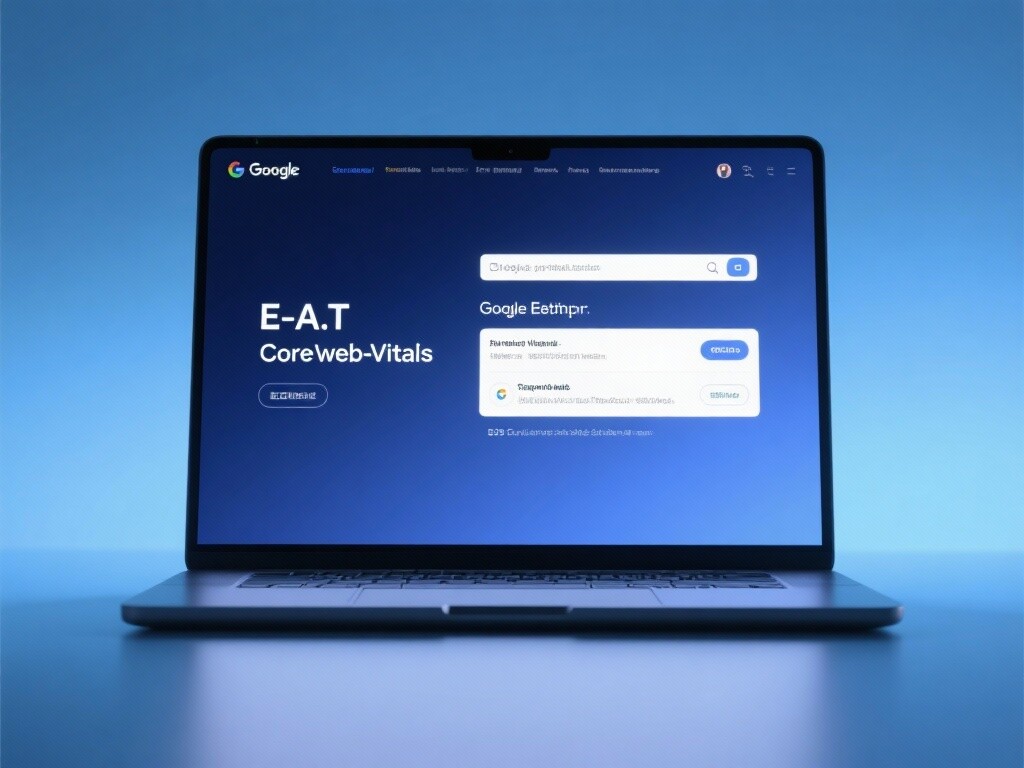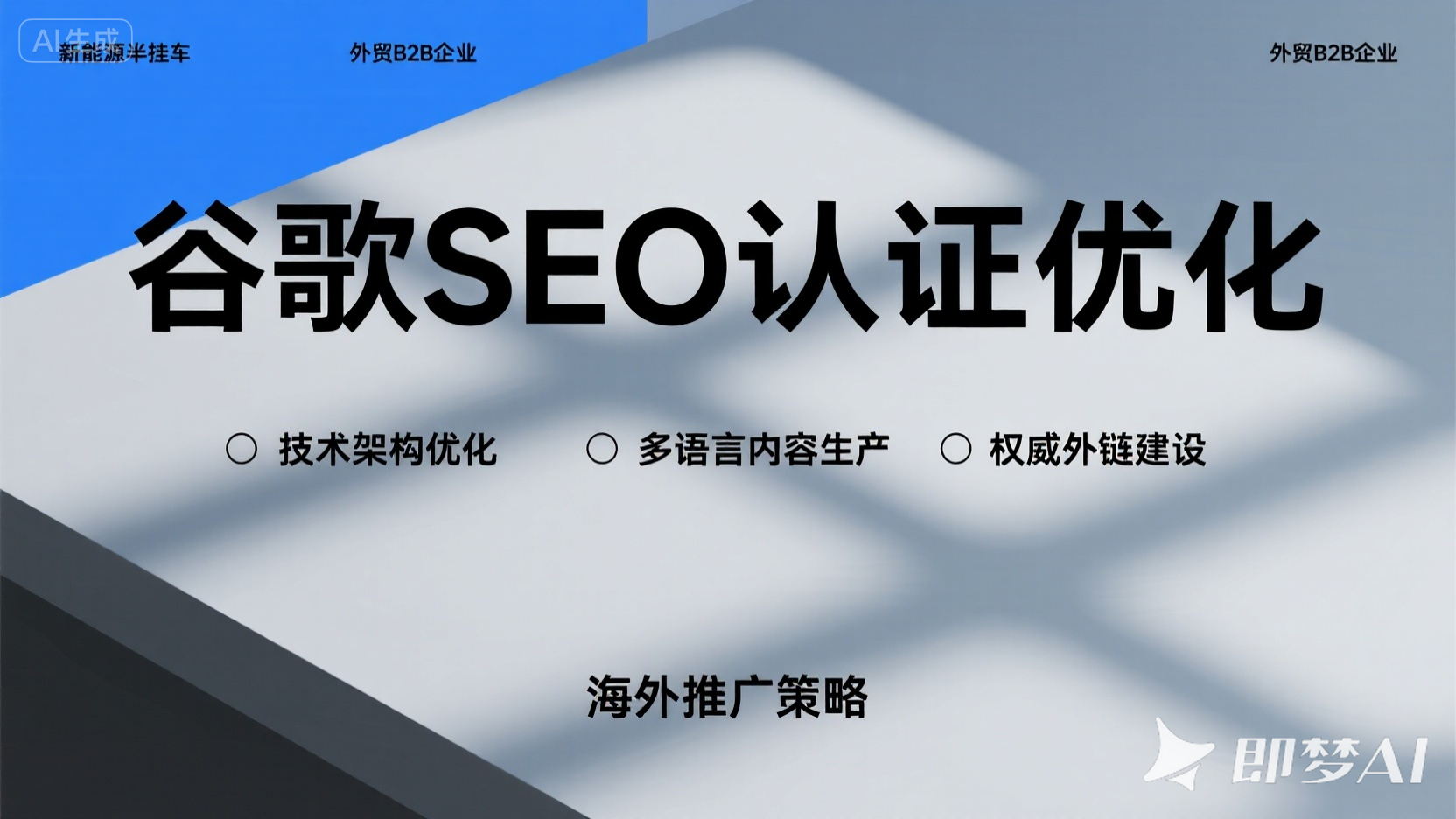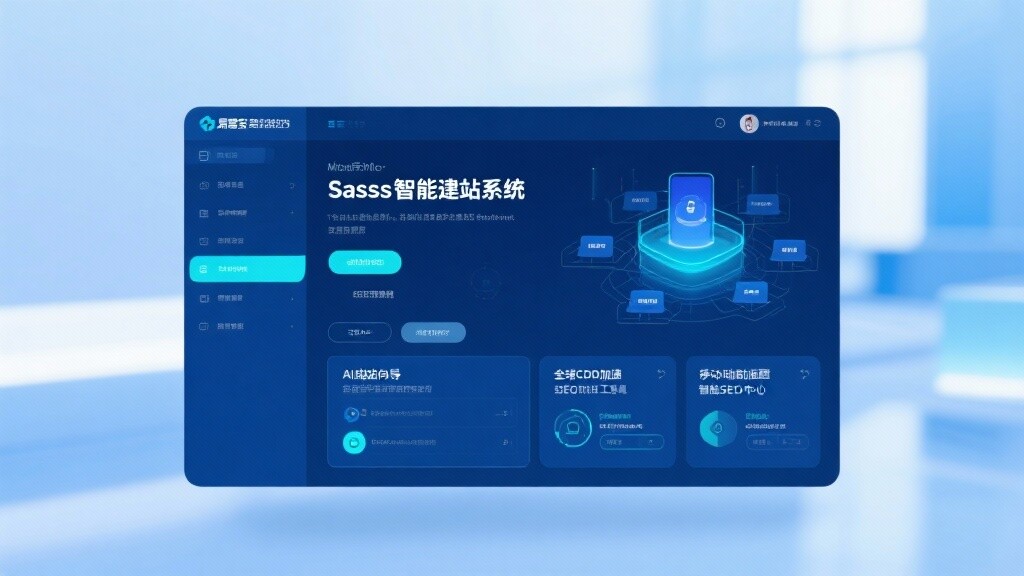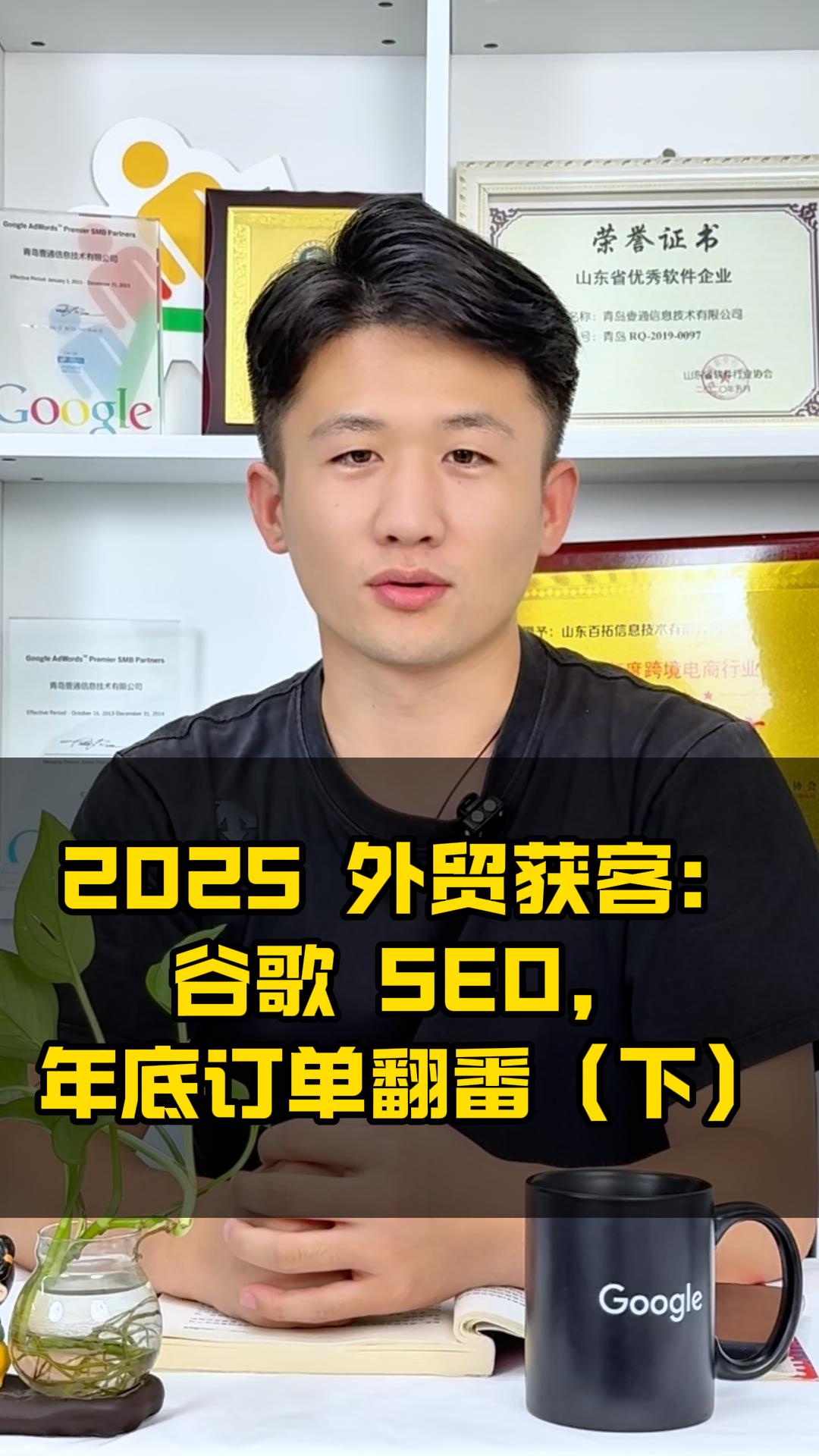Easy Camp Cloud Intelligent Website Construction and Marketing System Platform!
I. The Authoritative Definition and Core Value of Google Ranking
1. The authoritative definition of Google Ranking
Google ranking refers to the position of your webpage on the Google search engine results page (SERP) for a specific keyword or query. This position is calculated in real time by Google's complex algorithm model (including PageRank, BERT, MUM , etc.), based on factors such as the relevance of the website content, authority (EEAT), user experience (Core Web Vitals), and technical health.A comprehensive assessment of more than factors.
2. The core strategic value of Google ranking
II. The Development History of Google Ranking: From Link Quantity to EEAT Authority
The history of Google ranking is the evolution of search engines from simple information matching to complex semantic understanding and content credibility assessment .

1. Early Stage: The Golden Age of PageRank and Link Count (1998-2003)
Technical characteristics: PageRank (a link-based voting mechanism) is the core. The number of links determines the ranking.
Main methods: SEO focuses on acquiring a large number of links , and link farms and link factories are prevalent.
Limitations: It is susceptible to manipulation by spam links .
2. Anti-cheating and the awakening of content quality (2003-2015)
Milestones: **Updates to algorithms such as Panda (content quality), Penguin (link quality), and Hummingbird (semantic search).**
Technological shift: Rankings are beginning to penalize low-quality content and unnatural links . SEO efforts are shifting towards high-quality, original content and natural link building , focusing on user intent (Search Intent) .
3. Mobile-first, performance-driven, and the EAT era (2015 to present)
Core focus: Mobile-first indexing, Core Web Vitals (CWV) performance metrics , and Content Authority (EAT, later upgraded to EEAT) .
Technological advancements: Google ranking factors have expanded to include user experience, page load speed, author expertise, and brand credibility . **AI/machine learning models (such as BERT and MUM)** help Google better understand complex queries and cross-language information.
Trend: Emphasis on authority, credibility, and user retention .
III. The Technical Principles of Google Ranking: Three Core Determining Factors
To achieve and maintain a high Google ranking, one must excel in the following three dimensions, which are the underlying logic of the Google algorithm.
1. Website Technical Architecture and Performance (Technical SEO & CWV)
The principle is that Google must be able to crawl and index your website without any problems, and the website must provide a super-fast loading experience .
Core technologies:
Crawlability and indexability: Optimize Robots.txt and XML Sitemaps , ensure correct canonical tags , and avoid wasting crawling budget .
Core Web Vitals (CWV): Ensures that LCP (Maximum Content Render), INP (Interactive Latency), and CLS (Layout Offset) metrics meet Google's green standards . This is the foundation for mobile-first ranking .
Mobile-friendly: Ensure all pages are designed to be fully responsive and provide a perfect user experience on mobile devices.
2. Content Relevance and Semantic Understanding (On-Page & User Intent)
Principle: Your content must accurately match the true intent behind a user's search and provide in-depth, comprehensive value .
Core technologies:
Search intent matching: Analyze the top-ranking pages to determine whether the keywords are informational, transactional, or navigational , and provide the most matching content format.
Semantic content: Use H tags, lists, tables and other structures to organize content clearly, and use Schema Markup to describe content entities to Google to improve semantic understanding .
Long-tail coverage: Create content clusters around a core theme to capture more segmented, high-converting long-tail keyword traffic.
3. Authority, experience, and trustworthiness (EEAT & Off-Page SEO)
How it works: Google assesses your website’s professional standing, author experience, and overall credibility through external and internal signals.
Core technologies:
High-quality backlinks: Obtaining referencing links from top-tier, high-authority, and highly relevant websites within the industry serves as a vote of confidence .
EEAT Signal Enhancement: Ensure content is written and credited by domain experts , clearly showcasing company qualifications, user reviews, and industry accolades , especially in the area of **YMYL (Your Money Your Life)**.
Brand mention tracking: Proactively manage brand mentions and reputation on social media, news, and forums .
IV. Core Characteristics and Strategic Advantages of Google Ranking
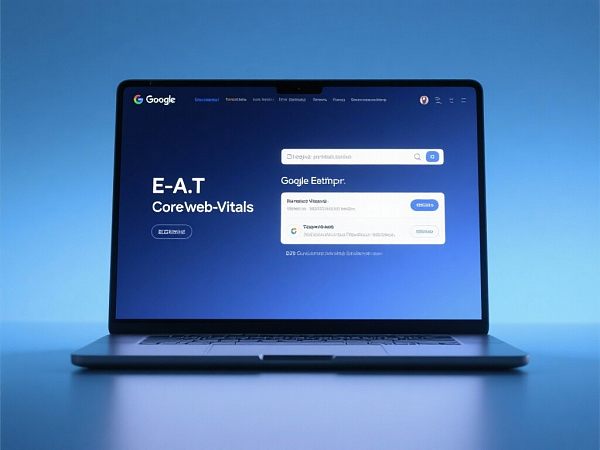
1. The compounding effect of non-linear growth
Key characteristic: Improving Google rankings is a cumulative process . Initial investments will yield exponential returns later as authority, content, and links accumulate .
Advantages: Ensures that the company's organic traffic growth has strong momentum , making it difficult for competitors to easily surpass.
2. Extreme conversion efficiency
Feature: Users actively searching on Google means they already have a need and intention .
Advantages: Top-ranking Google traffic is high-intent traffic , with conversion rates and customer lifetime value (LTV) far exceeding those of social media or display ad traffic.
3. Transparent and quantifiable success criteria
Features: Google rankings can be precisely monitored through tools such as Google Search Console (GSC) , and everything from ranking, impressions, click-through rate to average position can be quantified.
Advantages: The ROI of SEO investment is clearly visible , making it easier for management to make strategic decisions and allocate budgets .
4. The basis for globalization
Features: Google is the world's largest...The dominant search engine in over of the market.
Advantages: A good international SEO ranking strategy can be quickly replicated in multilingual and multi-regional markets, making it the optimal digital infrastructure for global expansion .
V. In-depth Application and Practical Scenarios of Google Ranking
1. The battle for homepage placement of core keywords
Application: Targeting core keywords with high competition and high transaction value .
Practical application:
Competitor analysis: Utilize SEO tools to conduct in-depth analysis of the CWV, content breadth, and link sources of the top 5 ranked websites .
Content Beyond: Creating content that is deeper than existing content times the content of "skyscrapers" with a stronger EEAT signal .
Internal link weight concentration: Concentrate the strongest weight within the website to the target core page through the internal link structure .
2. Improve Core Web Vitals performance
Application: To resolve website ranking stagnation or decline caused by slow speed and poor user experience .
Practical application:
Diagnose LCP: Optimize key resources and image compression on the first screen to ensure LCP is maintained.Completed within seconds.
Diagnose INP: Remove or delay rendering blocking JavaScript to improve page responsiveness .
3. Zero-click results and Featured Snippets capture
Application: Aim for featured snippets that rank above number one, ensuring exposure even without clicks.
Practical application:
Intent formatting: Identify intents such as "how to do", "what is", and "list" and provide concise answers directly in the content in a well-structured List or Paragraph format.
FAQ Schema: Deploy structured FAQ data in the Frequently Asked Questions (FAQ) section to obtain rich media search results .
4. International Google ranking optimization (multi-language/multi-region)
Application: For companies that need to achieve rankings in different regions around the world .
Practical application:
Hreflang Deployment: Ensure that Hreflang tags are correctly deployed on all multilingual/multiregional pages to avoid duplicate content penalties .
Localized content: Content should be written by native speakers of the target market and include localized currency, addresses, and cultural elements .
VI. YiYingBao: Your Google Ranking Acceleration and Authority Building Expert
E-Creative provides a Google ranking improvement system based on AI technology, data science, and the EEAT strategy .
CWV Compliance Guarantee: We consider Core Web Vitals optimization the lifeline of rankings, ensuring your website performance is industry-leading through code-level technical audits and global CDN integration .
EEAT Authority Architecture: Provides customized author schema deployment, professional qualification display, and high-authority link building solutions to systematically enhance your brand credibility .
AI-driven content-winning strategy: Utilize advanced semantic analysis tools to plan keywords with the highest conversion intent and guide your content team to create authoritative content that surpasses the depth of your competitors .
Quantifiable ranking growth roadmap: providing** months/ - month ranking forecasts, traffic projections, and ROI tracking reports** make your growth transparent and controllable.
FAQ
1. How long does it take to see results from Google rankings? Why do rankings fluctuate?
Answer: Usually required toIt takes months to see a stable and noticeable improvement.
Time factor: Google needs time to recrawl and index your optimized content and evaluate user behavior signals .
Ranking fluctuations: Google ranking fluctuations are normal. Reasons include: competitor optimization, Google's real-time algorithm adjustments, CWV performance changes , or fluctuations in crawling budgets . A professional SEO team will continuously monitor and differentiate between normal fluctuations and serious issues .
2. Google rankingOf the more than factors, which are the most important right now?
Answer: Although there are many factors, the three elements with the highest current priority are:
Content Relevance: Does your content thoroughly and accurately answer the user's search question?
EEAT (Authority & Trust): Are your website and content authors professional, trustworthy, and experienced enough ?
Core Web Vitals (Performance & UX): Does your website load extremely quickly, is easy to interact with, and has a stable layout ?
3. How to use SEO promotion to compete with paid advertising?
Answer: By "occupying permanent positions" and "increasing trust levels".
A permanent asset: Paid advertising requires continuous investment, while a high Google ranking is a permanent digital asset . You can continuously generate free traffic through SEO.
Trustworthiness: Organic rankings typically achieve higher trustworthiness and click-through rates than paid advertising . Allocate your paid budget to testing high-converting keywords, then use SEO to permanently dominate those keywords at a low cost .
4. Why is my website fast, but my Google ranking is still low?
Answer: Google ranking is a comprehensive score, and speed is only one part of it.
Possibility 1: Low content relevance : Your content lacks depth or fails to meet the user's search intent .
Possibility 2: Insufficient EEAT signal : Your website lacks sufficient external authoritative links or the authors lack professional certification .
Possibility 3: Technical obstacles : There may be other technical issues such as indexing problems or incorrect normalization of labels that prevented Google from giving a high score.

Customer Reviews
Mr. Huang, CEO of a cross-border B2B industrial equipment company
Our official website isOur custom-developed Core Web Vitals solution, developed years ago, was slow and ranked poorly. E-Creation's Google ranking optimization solution completely resolved our Core Web Vitals performance issues . After their optimization...Within months, the LCP time for our website was shortened. . At the same time, they guided us in establishing an authoritative product knowledge center and deploying Schema Markup . Now, we**Among the core high-value keywords results consistently ranked in the top 5 on Google's first page**, resulting in a doubling of organic search inquiries. times . They proved that technical optimization is the first step to achieving a higher ranking.
Ms. He, Marketing Director of an online education and training platform
"As a platform providing services in the YMYL (vocational education) field, we deeply understand the importance of EEAT for Google ranking. YiYingBao's solution integrates EEAT building into every aspect . They helped us standardize the presentation of instructors' professional qualifications and academic citations , and obtained high-authority links from multiple industry association websites . Through systematic authority building, our website's overall credibility score has significantly improved , and we have successfully obtained featured snippets for several highly competitive keywords , resulting in exponential growth in course registrations from organic traffic ."
 Google SEO Certification Optimization: Key Steps to Improve Website RankingsThis article systematically explains the complete process of Google SEO certification optimization, including technical architecture optimization, multilingual content production, authoritative backlink building, and other key aspects, with a special focus on providing actionable overseas promotion strategies for B2B export enterprises in fields like new energy semi-trailers.
Google SEO Certification Optimization: Key Steps to Improve Website RankingsThis article systematically explains the complete process of Google SEO certification optimization, including technical architecture optimization, multilingual content production, authoritative backlink building, and other key aspects, with a special focus on providing actionable overseas promotion strategies for B2B export enterprises in fields like new energy semi-trailers. From 0 to 1: How to use EYB smart site quickly build foreign trade independent station?Comprehensive analysis of YiYingBao intelligent station building system in foreign trade independent station building technical advantages and practical path, including market positioning, functional configuration, SEO optimization and other core modules.
From 0 to 1: How to use EYB smart site quickly build foreign trade independent station?Comprehensive analysis of YiYingBao intelligent station building system in foreign trade independent station building technical advantages and practical path, including market positioning, functional configuration, SEO optimization and other core modules. 2025 Foreign Trade Lead Generation: Google SEO Strategies to Double Year-End Orders (Part 2)Must-Read for Foreign Trade Business Owners! Revealing 2025 Google SEO Lead Generation Techniques to Help You Double Year-End Orders. Break Free from Platform Dependency, Build Private Traffic, and Attract Global Clients Proactively!
2025 Foreign Trade Lead Generation: Google SEO Strategies to Double Year-End Orders (Part 2)Must-Read for Foreign Trade Business Owners! Revealing 2025 Google SEO Lead Generation Techniques to Help You Double Year-End Orders. Break Free from Platform Dependency, Build Private Traffic, and Attract Global Clients Proactively!


